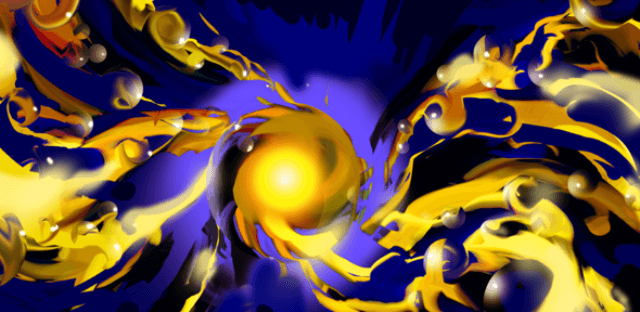May 4 2016
The tiniest engine of the world, measuring only a few billionths of a meter, has been designed by researchers from the University of Cambridge. The nanoscale engine is capable of self powering itself, using light, paving the way for futuristic nano-robotics that are capable of navigating in water, sensing the surrounding environment, or even combating diseases by entering living cells.
 Expanding polymer-coated gold nanoparticles. (credit: Yi Ju/University of Cambridge NanoPhotonics)
Expanding polymer-coated gold nanoparticles. (credit: Yi Ju/University of Cambridge NanoPhotonics)
The study findings have been published in the PNAS journal.
The prototype engine is composed of charged gold nanoparticles that are bound together in a gel form using temperature-responsive polymers. When a laser is used to heat the ‘nano-engine’ to a specific temperature, a large amount of elastic energy is stored by the engine within a fraction of a second following the collapse of the polymer coatings, subsequent to the expulsion of all of the water from the gel.
As a result, the gold nanoparticles are forced to bind together into closely packed clusters. However when the engine is cooled the gold nanoparticles are rapidly and forcefully pushed apart - just like a spring - due to the polymers taking on water and expanding.
“It’s like an explosion,” said Dr Tao Ding from Cambridge’s Cavendish Laboratory, and the first author of the paper. “We have hundreds of gold balls flying apart in a millionth of a second when water molecules inflate the polymers around them.”
We know that light can heat up water to power steam engines. But now we can use light to power a piston engine at the nanoscale.
Dr Ventsislav Valev, University of Bath
Nanoscale machines have long been a sought-after device for both researchers and public. However, the lack of ways to make them move has left them in the realm of science fiction. However, the newly developed method by the Cambridge scientists is not only simple and ultrafast, but can exert enormous forces.
These nano-machines exert forces several orders of magnitude higher than those by any other previously developed device, representing nearly a hundred times better force per unit weight than any muscle or motor. The researchers explained that the nanoscale engines are also bio-compatible, economical to produce, energy efficient and have a rapid response.
Professor Jeremy Baumberg from the Cavendish Laboratory, who was the leader of the work has called the devices actuating nano-transducers or ‘ANTs’. “
Like real ants, they produce large forces for their weight. The challenge we now face is how to control that force for nano-machinery applications.
Professor Jeremy Baumberg, Cavendish Laboratory
The work proposes how to convert Van der Waals energy into elastic energy of polymers and discharge it rapidly. The Van de Waals energy defines the attraction between molecules and atoms.
The whole process is like a nano-spring. The smart part here is we make use of Van de Waals attraction of heavy metal particles to set the springs (polymers) and water molecules to release them, which is very reversible and reproducible.
Professor Jeremy Baumberg, Cavendish Laboratory
At present, the researchers are working on the commercialization of this technology for use in microfluidics bio-applications, in close cooperation with Cambridge Enterprise, the commercialization arm of the University of Cambridge, and several other companies.
The research received funding as part of a UK Engineering and Physical Sciences Research Council (EPSRC) investment in the Cambridge NanoPhotonics Centre, and the European Research Council (ERC).